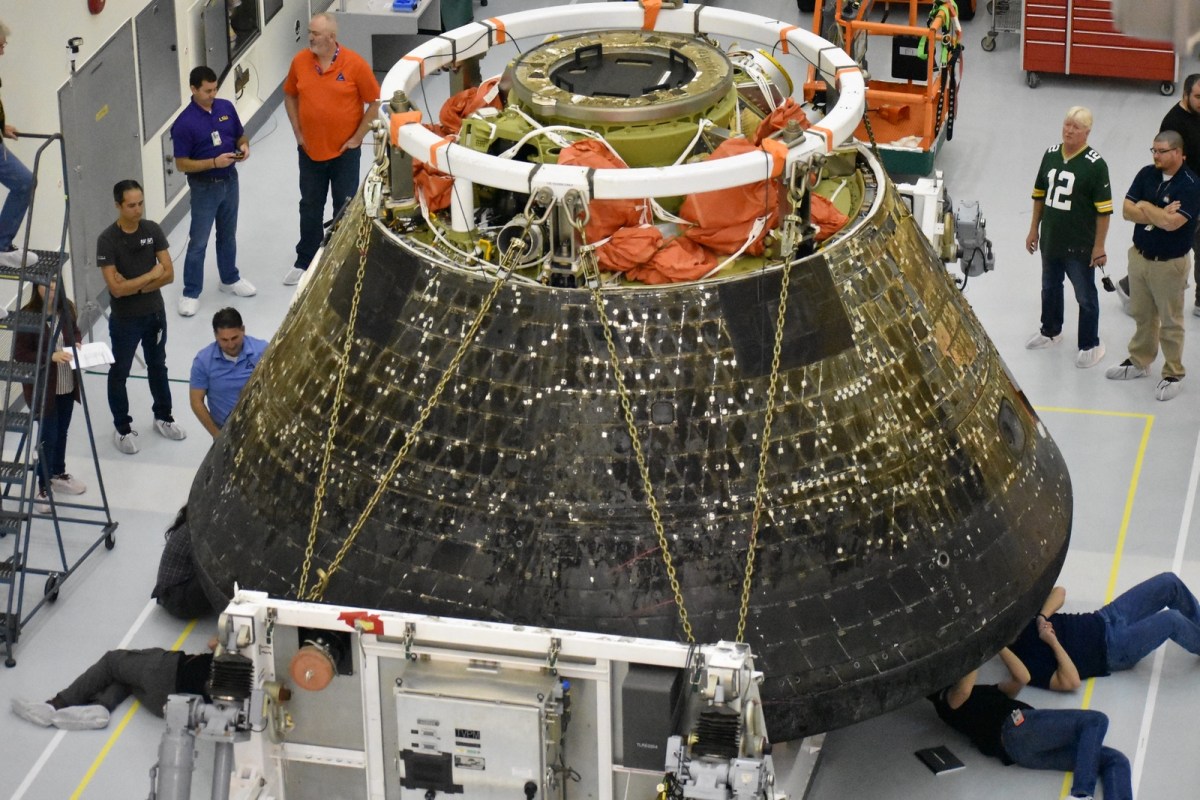WASHINGTON — A report by NASA’s inspector general has disclosed new details about problems with the Orion spacecraft’s heat shield and other issues that delayed its first crewed launch.
The May 1 report by the NASA Office of Inspector General (OIG) reviewed problems with the Orion spacecraft, as well as ground equipment and the Deep Space Network, from the uncrewed Artemis 1 mission launched in late 2022.
One of the biggest issues was with the Orion heat shield. NASA disclosed months after the flight that more of the ablative heat shield material had been lost during reentry than expected, but added that it has not posed a safety risk to the spacecraft. NASA is still examining what happened to the heat shield, and that was one of three issues that led the agency in January to delay the Artemis 2 mission from late 2024 to no earlier than September 2025.
According to the OIG report, NASA found more than 100 locations on the heat shield where material “chipped away unexpectedly” during the Artemis 1 reentry. The report included images showing pockmarked portions of the heat shield that had not previously been released by the agency.
Images from the NASA OIG report showing damage to the Orion heat shield after the Artemis 1 mission. Credit: NASA OIG
The heat shield material, known as Avcoat, “wore away differently than NASA engineers predicted, cracking and breaking off the spacecraft in fragments that created a trail of debris rather than melting away as designed,” the report stated. “The unexpected behavior of the Avcoat creates a risk that the heat shield may not sufficiently protect the capsule’s systems and crew from the extreme heat of reentry on future missions.”
NASA has yet to find a root cause for the behavior of the heat shield material. In a response accompanying the report, Cathy Koerner, NASA associate administrator of exploration systems development, stated that ground testing “successfully recreated char loss” and that that the material in those tests “has the same features as observed on the Artemis I heat shield.” But the OIG report noted that while NASA was able to recreate the char loss, “they could not reproduce the exact material response or flight environment experienced during Artemis I.”
At an April 26 meeting of the NASA Advisory Council’s human exploration and operations committee, Amit Kshatriya, deputy associate administrator for the Moon to Mars Program, said understanding the heat shield performance was the top risk for the Artemis 2 mission.
The focus, he said, is understanding the “fundamental physics” of the heat shield material and how it could come loose during reentry. “We’re getting close to the final answer in terms of that cause,” he said, while others analyze potential changes in the reentry trajectory to alter the heat load on the capsule.
“When we stitch it all together, we either will have flight rationale or we won’t,” he concluded. He didn’t estimate when that would be done, although NASA’s response to the OIG report offered a planned completion date of June 30.
In addition to the heat shield char loss, the OIG report said that three of four separation bolts on the base of the heat shield, used to separate the service module before reentry, experienced “unexpected melting and erosion” that post-flight analysis blamed on a thermal model discrepancy.
NASA plans to redesign the separation bolt on later Orion spacecraft but, for Artemis 2, will install additional thermal protection material in the bolt gaps. The report added that the work for Artemis 2 can’t be completed until NASA finalizes its work on the overall heat shield.
Other issues cited in the report include issues with a power distribution unit on the service module where latching current limited opened without being commanded to do so, which NASA blamed on radiation exposure and addressed with changes to flight software and operations procedures. A problem with a Deep Space Network station in California caused a 4.5-hour loss of communications with Orion during the Artemis 1 mission, which the OIG linked to broader issues with the network.
The report also highlights previously documented damage to the mobile launch tower, due in part to low-frequency acoustics that were not accurately modeled before the launch. Elevators were damaged because “blast doors” intended to protect them turned out to be fiberglass doors designed only to shield them from wind. Repairs to the mobile launcher cost $26 million, more than five times the $5 million NASA had planned for post-launch refurbishment.
The report provided six recommendations for addressing the issues found during the Artemis 1 mission, which NASA accepted, adding that it was already working on them The agency, though, complained in its response that the OIG audit caused “disruptions to ongoing workflow and priorities” and that the report was “more engineering focused than having a scope of understanding our risk management.”
OIG defended its approach to the review of the Artemis 1 mission. “Providing timely recommendations aimed at further ensuring the safety of astronauts in the upcoming Artemis II mission is not only well within the oversight role of the OIG but is a vital responsibility of our office. We will continue to provide the level of oversight of the Artemis campaign that we deem appropriate.”
